The Oregon Coast Trail Section 1 travels through diverse landscapes and significant historic sites. The route proceeds through miles of mellow sandy beaches, a tourist mecca, over a forested headland, among some of the most iconic coastline in Oregon, and around a few points that are only passable at low tide. Hikers will trek from Fort Stevens State Park and the shipwreck of the Peter Iredale, which is forever entombed in sand, beyond the Lewis and Clark statue that marks the end of the Lewis and Clark Trail, past views of the infamous off-shore Tillamook Rock Lighthouse, and even to a World War II bunker being reclaimed by the dense forest that surrounds it. Though a significant portion of the OCT traces busy roadways, a mere 4.5 miles of this segment is on pavement; 23 miles are on sand, and the remaining 8.5 miles are on dirt trail. Hikers will also find what may possibly be the most luxurious accommodations of the entire OCT: Adirondack shelters complete with bunks are located early in the route.
Tips for hiking the Oregon Coast Trail
The Oregon Coast Trail offers hikers an opportunity to experience the beauty of Oregon’s coastal landscapes and ecosystems in an intimate and continuous way, and it passes through fragile environments. Your awareness of a few additional items can enrich your overall experience on the OCT and help minimize your impact on delicate environments along the way.
- Before departing on your hike, learn the Leave No Trace Seven Principles so that you can practice them while you are out on the trail. The more that people incorporate Leave No Trace into their decisions and habits, the better the outdoor experience will be for everyone.
- Learn about Oregon’s five unique marine reserves. Marine reserves are areas that have been set aside for study, research, and conservation; it is illegal to remove any marine life from a marine reserve, and they are also protected from any development. Marine protected areas, which are often adjacent to reserves, allow some fishing and development. Marine reserves are wonderful areas to observe wildlife and take in Oregon’s beautiful coastal scenery. Fortunately, Oregon’s marine reserves couldn’t be more accessible than when hiking the OCT. From north to south they include:
- The islands and sea stacks along the coast are protected as part of Oregon Islands National Wildlife Refuge. They provide crucial nesting habitat for seabirds and pupping/resting sites for seals and sea lions. All seabirds and marine mammals are protected by federal law and are sensitive to human disturbance. For this reason, all islands and sea stacks are closed to public access year round.
- Portions of the trail meet the ocean's waterline and may only be passable at low tide. Excercise caution and safe judgement; wait for appropriate tidal conditions in these areas, and always watch for sneaker waves.
- Pay special attention to areas signed and posted as snowy plover habitat. A handful of Oregon’s beaches and estuaries provides critical habitat for the western snowy plover, a species that the U.S. Fish and Wildlife Service listed as threatened in 1993. The breeding season for the western snowy plover is from March 15 to September 15, and during this time it is imperative to avoid potential nesting locations in dry sand beach areas. Dogs, kites, bikes, and vehicles are all prohibited from March 15 to September 15, and walking is only allowed on hard-packed wet sand. Please do your part to help this threatened species survive by complying with posted restrictions and completely avoiding closed areas. There are designated snowy plover areas from Fort Stevens to Floras Lake, and hikers should be aware of their locations. To learn more, be sure to check out these snowy plover resources:
- The Oregon coast is generally a very dog friendly location, and dogs are allowed on most beaches, state parks (when on a leash) and other coastal public lands. However, there are specific times and locations when dogs are not permitted in certain areas, such as beaches and estuaries identified as snowy plover habitat during nesting season. Please pay attention to posted signage and respect times and areas where dogs are prohibited.
- For those interested in hiking the OCT in sections, or even just accessing the trail for day hikes, take note that recreation fees and passes are required at several federal recreation sites. If you will be parking at one of the state or federal fee area recreation sites, make sure to pick up the applicable recreation pass such as an Oregon Coast Pacific Passport.
Fort Stevens to Seaside

The start of the OCT lacks some grandeur in comparison to what lies ahead. At the corner of a substantial parking lot at the north end of Fort Stevens State Park, a small blue and black trail marker indicates the north trailhead of the OCT. After a short walk through a small forest and over grassy dunes, descend onto a beach that may be riddled with vehicles, which are permitted on this long 15-mile stretch of beach. You may find it more productive to walk in the packed wet sand if the tide is right, and this is the only option when walking near western snowy plover habitat between March 15 and September 15. This area (Clatsop and Necanicum Spits) provides critical habitat for this endangered species. Please see the Tips section above for information on how to proceed through this sensitive habitat.
Approximately 3 miles into the OCT sits the most interesting site on this segment, the wreckage of the Peter Iredale. This steel-plated, iron-framed British vessel was constructed in 1890 and named for its owner. It ran aground in 1906 due to a combination of deteriorating weather conditions. As the vessel altered course after passing Tillamook Rock Lighthouse to enter the Columbia River, thick mist, a rising tide, and a northwest squall forced the ship into Clatsop Spit. An effort was made to salvage the ship several weeks later, but it had already started listing to port in the sand, making salvage efforts impossible.
Camping opportunities between Fort Stevens State Park Campground and the hiker camp on Tillamook Head are virtually nonexistant. Hikers could take a short day hike, exit the beach at the Peter Iredale, and camp in the hiker/biker camp that most coastal state parks offer; alternately, a long first day could be made for the entire 24 miles to the hiker camp. There are also many motel options in Seaside and Cannon Beach.
From the Peter Iredale it's about another 11 miles before the route exits the beach on Pacific Way in Gearhart. Follow Pacific Way, turn right on Ocean Avenue, and continue to its end. Turn left on E Street, then follow E Street to the right as it merges with Neacoxie Drive, then becomes G Street. Follow this road to Highway 101, then turn right (south). Cross Neawanna Creek, then take 24th Avenue to North Holladay Drive and turn right on 12th Avenue to return to the beach. This short section of pavement travel is mostly along lightly trafficked roads, and walkways are provided on the busier roads. An excellent alternative to walking the beach along Seaside would be to walk along the promenade. Reminiscent of California beach towns, this promenade butts right up to the sand, and it is flanked by many beachfront properties. About halfway down the promenade is the famous Lewis and Clark statue that officially marks the end of the Lewis and Clark Trail. Exit the beach at Avenue U, turning immediately right on Ocean Vista Drive. In approximately half a mile you’ll pass Seltzer Park, which may be your only source fo fresh water for several miles. From there follow Sunset Boulevard for approximately three-quarters of a mile to the Tillamook Head Trailhead.
Tillamook Head to Arch Cape

Here the trail changes drastically to climb the mighty Tillamook Head through repeated switchbacks to nearly 1,200 feet above the Pacific. Western hemlock and Sitka spruce abundantly populate the forests of the Oregon coast. Enjoy sweeping vistas from high atop these bluffs through a few breaks in the trees. Of the view from the top Captain Clark wrote, "I behold the grandest and most pleasing prospect which my eyes ever surveyed." The trail can often become quite soggy and, as a result, widening has occurred in some areas. Trail workers have attempted to mitigate this in some areas with small boardwalks. Be mindful and avoid walking on the edges of trails in soggy areas to prevent expanding the trail. Remember the Leave No Trace principle: Travel and camp on durable surfaces. These trails are ancient, originally made by Native Americans, and some are still used by hikers today.
Perhaps the highlight of Section 1 is the hiker camp and viewpoint found approximately 4 miles into the Tillamook Head Trail. Three Adirondack-style shelters, each complete with four bunks, are inhabited on a first-come, first-served basis. Should all the bunks be occupied, there is space to pitch a tent within the camp. A small wood shed is kept stocked with seasoned logs to stoke the provided fire pit, and there is a covered picnic table and a vault toilet available. Seasonal streams are the only sources for fresh water. Once you've rested your weary feet, take a short stroll to the high bluff overlooking Tillamook Rock Lighthouse, which sits just 1.2 miles offshore. Also known as "Terrible Tilly," this deactivated lighthouse was officially lit in 1881 after 525 days of harrowing construction, making it the most expensive lighthouse to construct and maintain on the West Coast. It earned its nickname due to the variable weather conditions and treacherous commute, not to mention the isolation the keepers were forced to endure. Due to the cost of maintaining it, the light was deactivated in 1957, and it is now a refuge to more than 12,000 nesting birds. Near the viewpoint you will also find a World War II bunker that is being reclaimed by the forest.
From here, it's a 2.5-mile hike south down the bluff to Indian Beach. The hike through the rest of Ecola State Park affords some of the most scenic coastal views you will find on the OCT. As the trail ascends up and down shorter bluffs, over rocky coastline, and through coastal forest, persistent views of Tillamook Rock Lighthouse can be enjoyed. This park has endured many landslides and trail washouts in recent years due to harsh winter storms. A short section of the trail from Indian Beach to Ecola Point has been washed out and remained impassable as of the time of this publication. Hikers may need to take the paved road between Indian Beach and Ecola Point day use areas. Please adhere to restricted area signs to avoid contributing to additional erosion. You can use the flush toilets and potable water in the day use area and enjoy one of the most recognizable (and photographed) views of the Oregon coast from the viewpoint south to Chapman Point and the distant Haystack Rock of Cannon Beach. Chapman Point hosts a large nesting colony of common murres, over 53,000 birds. These birds can dive up to 600 feet into the ocean for food. The trail continues for another 1.25 miles above Crescent Beach before joining pavement on Ecola State Park Road.
Ecola State Park Road eventually merges into East 5th Street for a short way. At Fir Street turn right and continue south to East 3rd Street. Follow this for approximately 0.2 miles to Whale Park, where you return to the beach. In 1806, Lewis and Clark met with an important tribe of the Tillamook at the mouth of this creek when they were exploring this area. Enjoy views of the iconic 235-foot Haystack Rock on Cannon Beach, and you are sure to see many various species of shore birds on the offshore stacks. The stacks along the Oregon coast were all volcanically formed around 10 million years ago, and they were once part of the shore. Since then, erosion has moved the shore back to where it is today. Eventually these remaining basalt monoliths will be swept away by the constant thrashing of wave action. Cannon Beach was named for a cannon that was washed to shore off the schooner Shark when it wrecked offshore here in 1846. If you have the time, exit the beach at any location to enjoy a hot meal at any of the excellent restaurants available in Cannon Beach, or stop in at any of the local art galleries and shops.
Be sure to plan ahead and watch the tides to ensure that you hike this leg of your trip at low tide only. Several points are only passable at low tide for the remainder of this section. Do not wade through the surf at high tide or as tide is rising. Hazards such as sneaker waves and rip currents are frequent on the Oregon coast and can catch anyone off guard and sweep even experienced hikers off their feet. There are a total of five points south of Silver Point that can only be passed at low tide:
- Humbug Point at the north end of Arcadia Beach. Be cautious crossing over slippery rocks.
- Hug Point protrudes the farthest out to sea of these five, and it may only be passable at very low tide. Be sure to enjoy views of Hug Point Falls pouring onto the beach (also a source for fresh water).
- Austin Point south of Hug Point Falls.
- Point Meriwether at the south end of Hug Point State Park (rocks may be crossed at medium tide).
- The unnamed point north of Arch Cape (rocks may be crossed at medium tide).
Enjoy the mellow 3-mile beach walk along Arch Cape after successfully passing those five points. At the very south end of Arch Cape Beach, where the beach butts up against the headland, exit the beach and follow the OCT trail signs down East Shingle Mill Lane for approximately 0.4 mile. Continue to follow OCT signs down a gravel road to the Oswald West State Park Trailhead and into Section 2. Note that the Cape Falcon Marine Reserve and Marine Protected Area sits just south of Arch Cape. This means that there are specific prohibitions against fishing and the harvesting of fish, invertebrates, and seaweed. Check here for specific clarifications on regulations, exemptions, and a detailed representation of the area's boundaries. Also, overnight camping opportunities between the Tillamook Head hiker camp and Arch Cape are also virtually nonexistent. There are, however, established backcountry campsites available a short distance into Section 2. Be sure to take advantage of the multiple fresh water creeks pouring onto the beach before entering Section 2.
Risks of hiking road sections
Although officially designated as a trail over 40 years ago, the OCT is an ongoing project and not yet a single continuous hiking trail. Gaps in the trail, usually caused by rivers, bays, or rocky headlands, require hikers to walk along busy roads (often U.S. Highway 101) that are not designed for pedestrian use. Oregon Parks and Recreation Department and other public and nonprofit agencies, including local cities and counties along the Oregon coast, are working to eliminate these breaks by establishing trails to connect trail segments and beaches.
In 2016, the Oregon legislature enacted legislation requiring OPRD to complete an action plan that will identify steps needed to complete the trail. This planning effort will identify key stakeholders and document the current status of trail completion, evaluate and assess alternatives for completing trail segments, and seek funding to complete new trail sections.
Until the trail is completed, OCT hikers will have to decide whether they choose to walk along the shoulder of the highway that is, in fact, currently an official part of the trail. It is important for OCT hikers to understand the risks of walking along the highway portions of the OCT. The most prevalent dangers are being hit by a vehicle or being struck by debris kicked up by or flying out of a passing vehicle. In addition, some highway sections along the Oregon Coast Trail are longer and more difficult than others. These highway sections are detailed in each section's guide.
Public safety is of the highest concern at Outdoor Project, and we do not condone walking along roads without a designated pedestrian path. We support utilizing other modes of transportation to connect the trail and beach sections such as public transportation, private shuttle or taxi, biking, ferry, or completing the Oregon Coast Trail in hiking sections to avoid the highway altogether. Two great resources for finding alternative transportation are Google Transit (Google.com/transit), Visit The Oregon Coast (visittheoregoncoast.com/transportation/), and an internet search for taxis or other transportation alternatives in the town nearest to the trail break. There are also ferry services available to cross the Nehalem River, Tillamook Bay and the Umpqua River, and these will greatly reduce the amount of highway miles one must walk. Note that ferry boats do run on a regular schedule and must be reserved in advance. More information on each of these ferries is found in Section 2 and Section 6.
This guide provides information needed for hikers who do choose to walk the trail in its entirety, including those portions along the highway. We urge those hikers to exercise caution to ensure a safe and enjoyable hike on the OCT.
For further information on the Oregon Coast Trail, be sure to check out these articles:
- Oregon Coast Trail Overview
- Oregon Coast Trail Section 2: Oswald West State Park to Tillamook River Bridge
- Oregon Coast Trail Section 3: Tillamook River Bridge to Bob Straub State Park
- Oregon Coast Trail Section 4: Pacific City to Otter Rock
- Oregon Coast Trail Section 5: Otter Rock to Heceta Head
- Oregon Coast Trail Section 6: Heceta Head to North Bend
- Oregon Coast Trail Section 7: North Bend to Bandon
- Oregon Coast Trail Section 8: Bandon to Humbug Mountain State Park
- Oregon Coast Trail Section 9: Humbug Mountain State Park to Pistol River
- Oregon Coast Trail Section 10: Pistol River to California
Logistics + Planning
Current Weather: Powered by Dark Sky







Preferable season(s)
Congestion
Parking Pass
Open Year-round
Pros
Cons
Trailhead Elevation
Highest point
Features
Typically multi-day
Suitable for
Permit required
Nearby Adventures
Nearby Lodging + Camping
A profound concept originally envisioned by governor Oswald West, in 1967 the Oregon legislature ultimately realized his vision of making the entire Oregon Coast forever open to the public in a piece of landmark legislation titled the Oregon Beach Bill, officially making all 363 miles public land. "The People's Coast" is truly a one-of-a-kind coastline, a unique blend of mountains and rocky stacks, towering old growth forests, marine sanctuaries, tide pools and kelp forests, charming towns, historic fishing communities, world-class golfing, breweries, and simply jaw-dropping scenic beaches. We encourage you to plan your next trip at visittheoregoncoast.com or by calling (541) 574-2679.

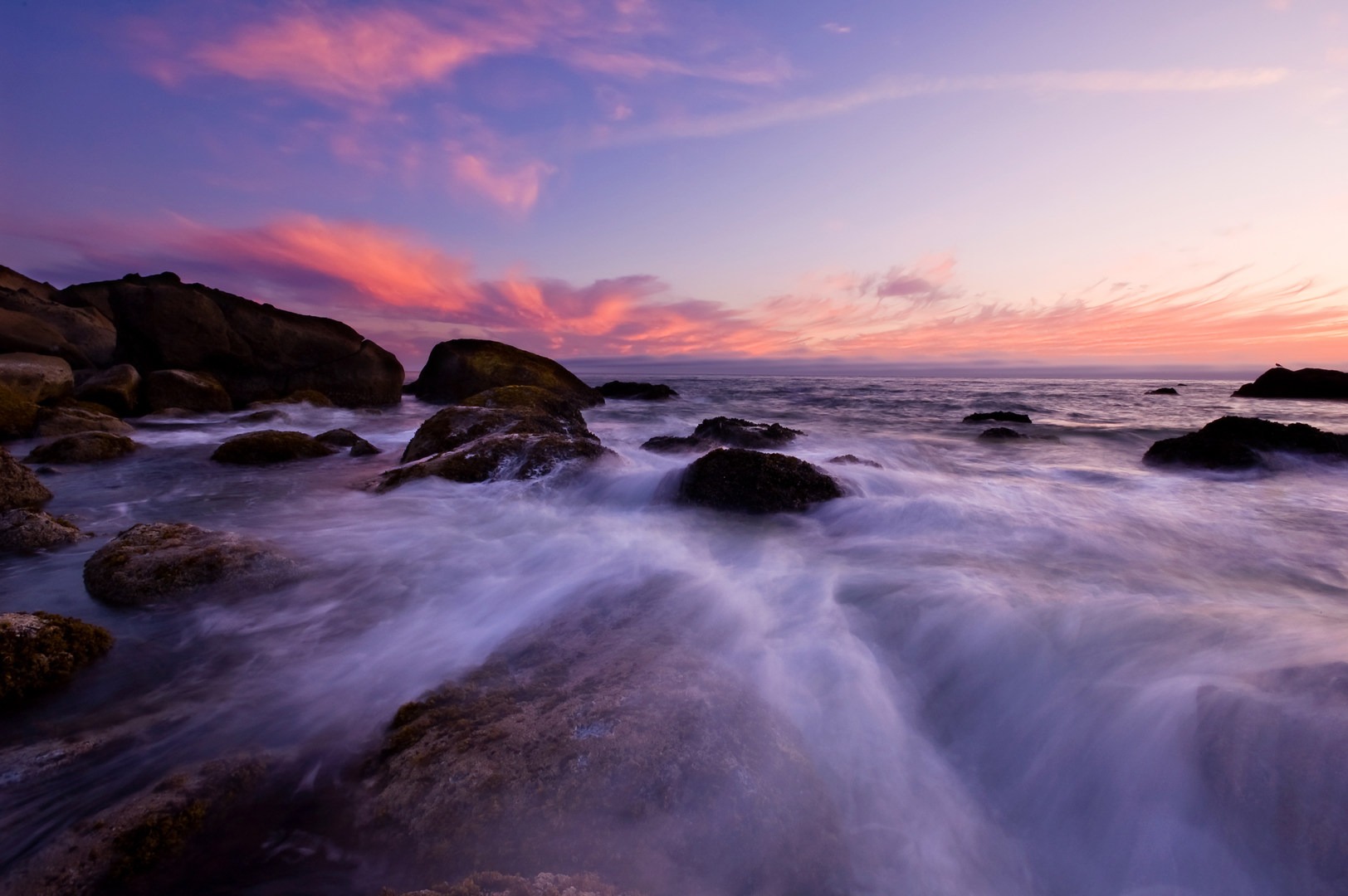













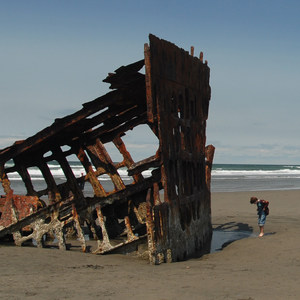
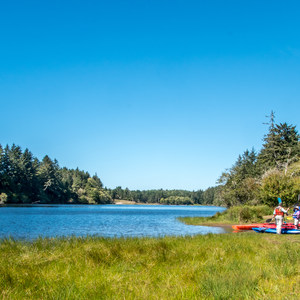
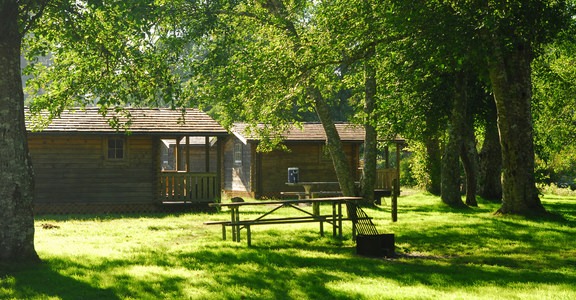
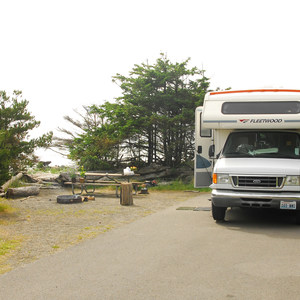
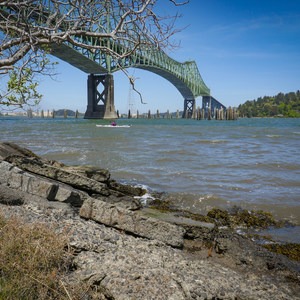

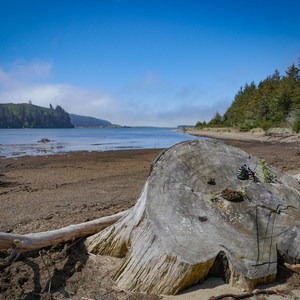
Comments
Sign In and share them.